TRD Issue 91 - Briefing: How a Single AI Image Changed Everything for One Lucky Startup
From supermarket shelves to viral Adidas deals, plus Walmart's StockX partnership bringing street style to the masses.
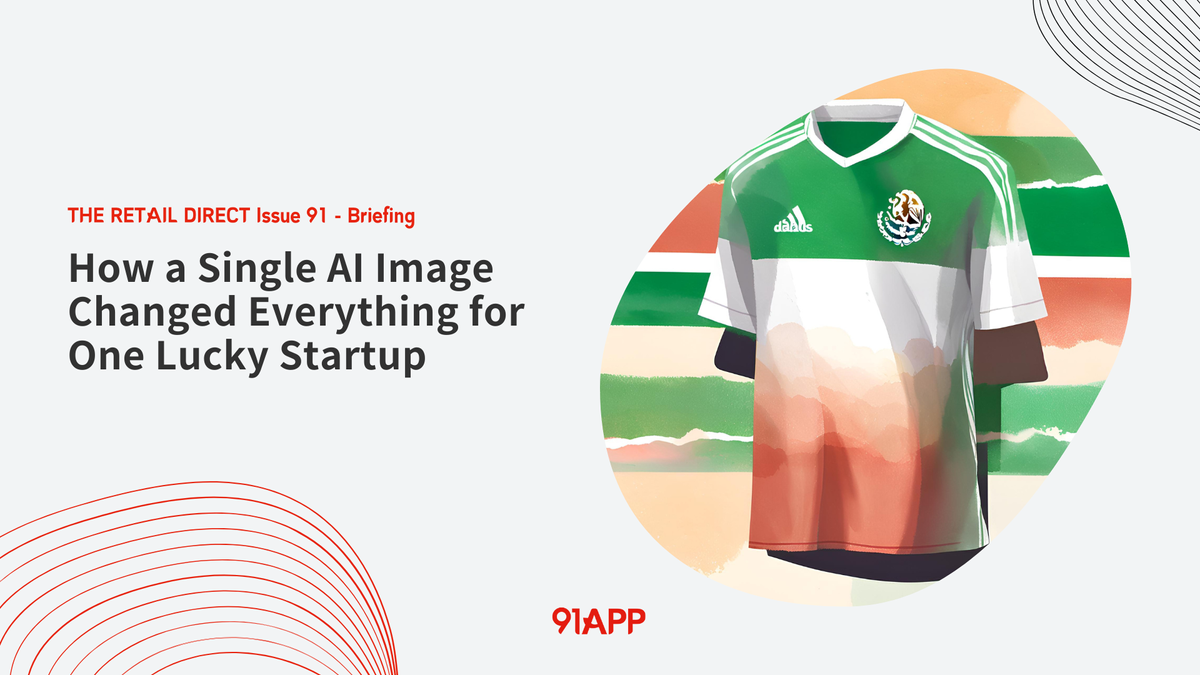
Hello Subscribers,
Just wrapped up my reading for the week and thought I'd share some fascinating stories I came across that might interest you too.
AI is absolutely everywhere in retail right now—supermarkets are scrambling to figure out if they're ready for the AI revolution to hit their shelves, and there's this wild story about a Mexican startup that landed a major Adidas contract just from posting an AI-generated concept image on LinkedIn!
The RFID + AI combo is also making waves for inventory management (definitely worth checking out if your team is still dealing with those shrinkage issues we talked about last month).
On the distribution front, smaller brands are getting creative with their approach—many are testing out partnerships with health clubs and boutique hotels before committing to traditional retail. Oh, and did you see that Walmart is partnering with StockX to sell authenticated sneakers? Quite the departure from their usual approach!
Happy reading!
The Retail Direct
About 91APP
Founded in 2013, 91APP is the premier OMO (online-merge-offline) SaaS company, providing one-stop omnichannel retail solutions in Taiwan, Hong Kong, and Malaysia. It offers advanced Commerce Solutions and Marketing Solutions that enable retail brands to penetrate the D2C (Direct-to-Consumer) e-commerce market and drive operational benefits to their full potential. In 2021, 91APP became the first SaaS company to be listed in Taiwan and has been named one of Taiwan's "NEXT BIG" companies by Startup Island TAIWAN.
For more information about 91APP (TWO: 6741), visit 91app.com.
AI
AI reshaping city operations: Leaders showing the way
Why it matters: Cities that strategically implement AI across multiple domains are better prepared to handle major urban challenges, with 78% of AI leader cities reporting readiness compared to 63% of less mature cities.
A new Deloitte report analyzing 250 cities across 78 countries reveals more than half already actively use AI, with another 35% piloting or planning implementations.
Top AI applications in cities:
- Traffic management
- Public safety
- Energy management
- Customer service
- Predictive maintenance
The AI leadership gap is significant. Leaders show nearly double the confidence in handling supply chain, geopolitical, and socioeconomic challenges compared to less mature cities.
What makes AI leaders different:
- Top-down commitment with dedicated vision and budget
- Modern cloud-based IT infrastructure
- Investment in AI skills and talent development
- Strong ecosystems connecting academia, research, and tech companies
- Integration of AI with other technologies like blockchain and IoT
Looking ahead: 87% of cities are planning, piloting, or actively using GenAI, with leaders exploring Agentic AI for more autonomous decision-making while maintaining human oversight for security and trust-building.
Source: Forbes
Adobe tackles B2B complexity with AI-powered marketing platform
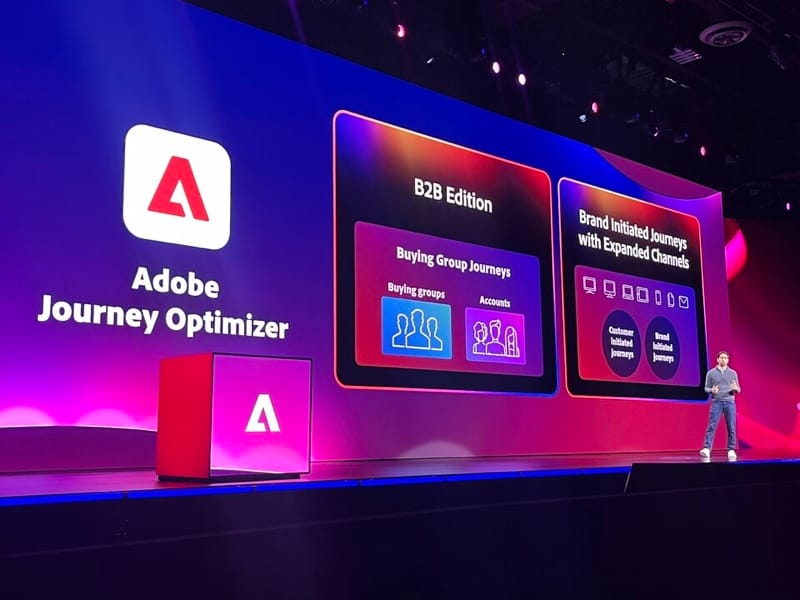
Why it matters: Adobe's new Journey Optimizer B2B Edition leverages generative AI to help marketers understand complex buying groups within target companies, potentially transforming how B2B sales cycles are managed.
The newly released platform shifts focus from individual leads to entire buying groups, addressing the reality that B2B purchasing decisions now involve multiple stakeholders across departments.
How it works:
- Consolidates decision-makers into cohesive units for better targeting
- Uses AI to identify missing roles in buying groups (like technical influencers or budget approvers)
- Generates personalized marketing plans for each group member
- Creates tailored content automatically across channels
- Integrates with other Adobe Experience Cloud products
Behind the strategy: This release builds on Adobe's growing Digital Experience segment, which is approaching billion-dollar status alongside its creative applications business.
Adobe's AI momentum continues to accelerate. Since introducing Firefly GenAI models in March 2023, the company has integrated AI across its product suite, including standalone apps and enterprise solutions.
While competitors like Canva make aggressive moves in the AI space, Adobe's comprehensive enterprise offerings give it a significant advantage in complex B2B environments.
Source: Forbes
Mexican startup lands Adidas deal through viral AI-generated concept
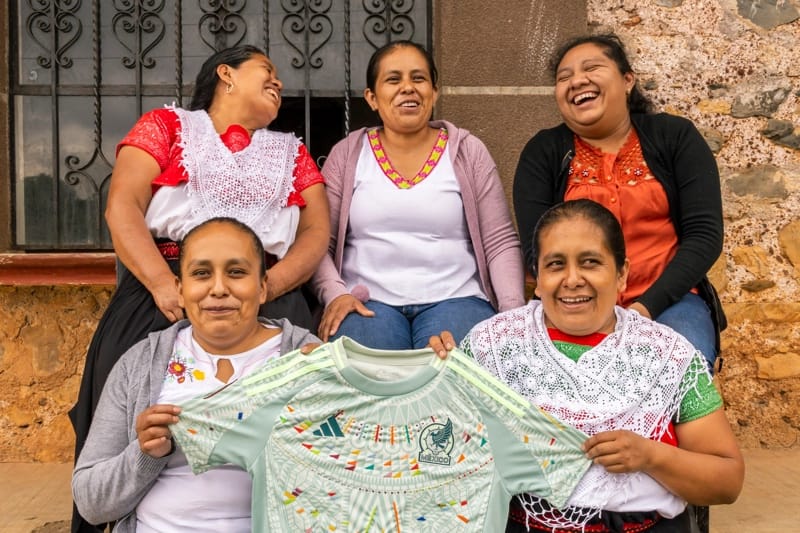
Why it matters: Someone Somewhere's viral LinkedIn post featuring an AI-generated Mexican soccer jersey concept landed them a major Adidas contract within days, demonstrating how AI can help small businesses compete globally.
The Mexico City-based startup, founded by childhood friends in 2016, connects indigenous artisans with global brands seeking sustainable production methods.
AI as growth catalyst: Using Stable Diffusion's text-to-image model, the company created concept products for major brands and shared them on social media. Their Adidas Mexican National Team jersey post garnered over 1 million views, with Adidas reaching out just one day later.
The partnership results:
- Special edition jerseys featuring 11+ hours of hand-embroidery by Mexican artisans
- QR codes on products that connect consumers with the specific artisan who created their item
- Additional Adidas collaborations planned for 2025
Remarkable business impact:
- Revenue grew 36x in three years
- Product designs increased from 10 to 5,000 monthly
- Created over 10 million products in the past year
- Triple the brand partnerships compared to last year
The profitable company has raised just $1.7 million to date and is now seeking additional funding to capitalize on growing nearshoring and sustainable procurement trends.
Source: Tech Crunch
RFID and AI: A powerful combo transforming retail inventory

Why it matters: The pairing of RFID and AI creates a dynamic solution for retail inventory management that can significantly reduce the $112.1 billion in annual retail shrink while improving customer experience.
RFID adoption is already mainstream, with 93% of North American retailers using the technology in some capacity, according to Accenture.
Three key applications of the RFID-AI partnership:
- Loss prevention: RFID captures real-time loss data while AI analyzes patterns to identify anomalies and unexpected behaviors, helping retailers build preventive strategies.
- Enhanced inventory visibility: RFID tracks item movement throughout stores while AI analyzes this data to predict demand, optimize stock levels, and reduce both overstock and stockout situations.
- Improved customer experience: The combination enables faster checkouts, accurate associate inventory information, and personalized product recommendations based on purchase history.
Implementation advice for retailers:
- Engage end-users early in the solution design process
- Take a "think big, start small" approach with incremental testing
- Consider leveraging AI on your own devices rather than cloud providers to better control operational expenses
While each technology is powerful independently, retailers that thoughtfully integrate RFID and AI can elevate operations to new levels of efficiency and customer satisfaction.
Source: Forbes
Marketing
Retail's evolving calendar: Holiday shopping now happens year-round

Why it matters: Only 24% of US shoppers now wait until November or December to start holiday shopping, forcing retailers to abandon traditional seasonal timelines to capture consumer spending earlier.
Seasonal creep is accelerating: Brands are launching holiday products and promotions months ahead of traditional dates - from Dunkin' releasing pumpkin drinks in early August to Pottery Barn selling Christmas items during summer.
What's driving the shift:
- Amazon's Prime Day and October Prime event disrupting traditional retail cycles
- Supply chain concerns making retailers prioritize early inventory management
- Inflation-conscious consumers spreading purchases over longer periods
- Early seasonal marketing generates higher engagement (51% more Instagram interactions)
Early bird advantage: Brands starting holiday social campaigns in late summer see 109% higher median interactions compared to those waiting until November/December. Similarly, promotional emails perform best when sent four weeks before a holiday.
The balancing act: While 67% of consumers expect marketing fatigue by November 1st, retailers who stick too rigidly to traditional calendars risk missing opportunities - Gartner found 65% of brands still don't post holiday content on Instagram until November/December.
"Retailers always respond to consumer signals, and over the last few years, retailers who have pulled forward their holiday promotional calendars have experienced success and growth," notes Kassi Socha, Gartner analyst.
Source: Modern Retail
Strategic hospitality partnerships: How wellness brands gain traction before retail

Why it matters: Startup CPG brands are increasingly choosing hotels, health clubs, and members-only venues as strategic marketing channels before committing to large retail orders, gaining valuable exposure to ideal early adopters.
These partnerships serve as low-risk testing grounds between direct-to-consumer and traditional wholesale channels, helping brands build credibility while refining their retail strategy.
How brands are leveraging hospitality:
- Hydration brand Cadence partnered with Soho House to feature products in bars, gyms and mini-bars
- Supplement brand Dose established a presence in 29 locations across luxury properties like 1 Hotel and Equinox clubs
- Cure Hydration targets dehydrated travelers through hotel room placements at Auberge, Canyon Ranc, and select Marriott properties
The strategic advantage: While these venues don't drive significant revenue, they offer captive audiences already primed for wellness experiences. Dose founder Vasu Goyal notes these partnerships have had "a big enough marketing impact that we're looking to expand into more hospitality venues."
These placements also boost brands' appeal to traditional retailers. As Goyal explains, "We've seen traditional retail partners excited about our presence in these spaces and the level of premium luxury it represents."
For younger brands, this approach offers a more manageable alternative to immediate retail expansion while building valuable brand recognition.
Source: Modern Retail
Inside Sephora's loyalty strategy: Exclusive events for top-tier customers
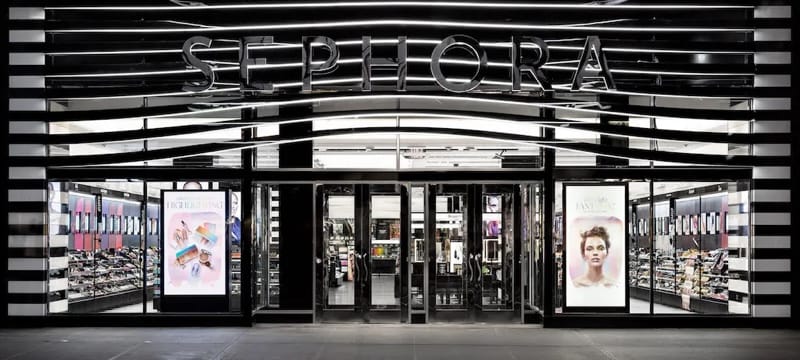
Why it matters: With 40 million Beauty Insider members driving a majority of sales, Sephora's loyalty innovations are crucial to maintaining its competitive edge in an increasingly crowded beauty retail market.
Sephora's recent Rouge Celebration Event targeted its highest-spending customers (less than 10% of members) with four days of exclusive perks, including early product access, brand masterclasses, and special rewards from premium labels like Tatcha and Givenchy.
The loyalty landscape is intensifying:
- 86% of U.S. shoppers belong to at least one loyalty program
- 31% of chief marketing officers are increasing loyalty program investments in 2024
- Key competitor Ulta Beauty attributes 95% of revenue to its 42.2 million loyalty members
Sephora's evolving approach:
- Launched Beauty Insider in 2007 with three tiers based on annual spend
- Added "Beauty Insider cash" in 2020, allowing point redemption for purchase discounts
- Introduced gamified challenges in 2023 to drive engagement with in-store services
"We were really inspired to think about, 'How do we truly celebrate these members and give them something that only Sephora could provide?'" said Emmy Brown Berlind, Sephora's SVP and general manager of loyalty.
The strategy appears to be working, with LVMH reporting Sephora had "another record-breaking year for revenue and profit" in its most recent earnings.
Source: Modern Retail
e-Commerce
Walmart-StockX deal brings sneaker culture to mass retail

Why it matters: This first-ever partnership gives Walmart shoppers access to authenticated, premium sneakers while StockX reaches millions of new customers, marking a significant convergence of sneaker culture and mainstream commerce.
Launching last September, the collaboration will feature hundreds of pre-verified sneakers, including Nike Jordan 1s, Jordan 4s, and Travis Scott collaborations - all authenticated by StockX and sold in original packaging.
For Walmart, this continues a marketplace expansion that's seen 30% growth for four consecutive quarters, following recent moves into premium beauty, collectibles, and secondhand goods.
Yes, but: The partnership risks diluting StockX's premium positioning by associating with a mass retailer, potentially alienating its core audience of sneaker enthusiasts who value exclusivity and streetwear credibility.
For StockX, the partnership provides access to Walmart's massive audience without cannibalizing direct sales, as "products will be listed across both platforms at scale."
The bottom line: This collaboration represents a significant shift in retail strategy for both companies - Walmart gains credibility in trendy, high-margin categories while StockX dramatically expands its customer reach beyond its traditional audience of sneakerheads and collectors.
Source: Retail Dive
Payments
PayPal deepens Shopify partnership through expanded payments processing

Why it matters: The newly announced integration makes PayPal an additional online credit/debit processor for Shopify Payments, creating a streamlined checkout experience that addresses the critical "last few feet" of eCommerce where conversion is make-or-break.
The collaboration brings the PayPal Complete Payments solution to Shopify's platform, integrating PayPal wallet transactions directly into Shopify Payments for U.S. merchants.
This means: A unified experience for managing orders, payouts, reporting, and chargeback flows - reducing friction points for both merchants and customers.
Yes, but: This expanded partnership enters an increasingly competitive checkout optimization space, where multiple payment platforms are racing to capture merchant adoption and consumer preference.
The stakes are high: PYMNTS Intelligence data shows that half of all consumers consider checkout ease when choosing where to shop, and 91% say a satisfying checkout experience strongly impacts their likelihood to return.
The bottom line: This partnership represents the ongoing evolution of eCommerce checkout as both companies look to capitalize on merchants' needs for operational efficiency and consumers' expectations for seamless payment experiences across digital and physical retail environments.
Source: PYMNTS
Alibaba breaks payment wall: WeChat Pay coming to Taobao and Tmall
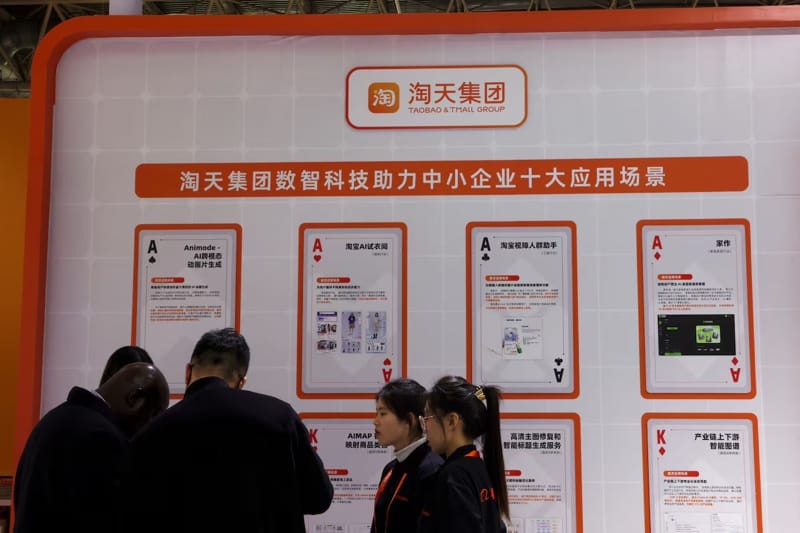
Why it matters: This landmark decision to accept rival Tencent's WeChat Pay on Alibaba's domestic e-commerce platforms signals the continued dismantling of China's tech "walled gardens" and could significantly reshape the competitive landscape.
Alibaba has informed merchants about the draft plan to add WeChat Pay alongside its affiliated Alipay payment system on Taobao and Tmall platforms, though no specific timeline for full implementation was announced.
The competitive context: Alibaba's rivals JD.com and PDD Holdings (Pinduoduo) already offer WeChat Pay as a payment option, potentially giving them an advantage with WeChat's massive user base.
Yes, but: This move comes as Alibaba faces domestic e-commerce challenges, with its recent earnings showing a 1% revenue decline in its domestic e-commerce arm, despite increased order volume.
The bigger picture: China's tech ecosystem has been slowly breaking down its payment exclusivity barriers since 2021 when WeChat users first gained the ability to share Alibaba product links - though they couldn't complete purchases using WeChat Pay until now.
The bottom line: This integration represents a significant shift in China's digital payment landscape, potentially benefiting consumers with more payment choices while reflecting the evolving regulatory environment that increasingly discourages closed digital ecosystems.
Source: Reuters


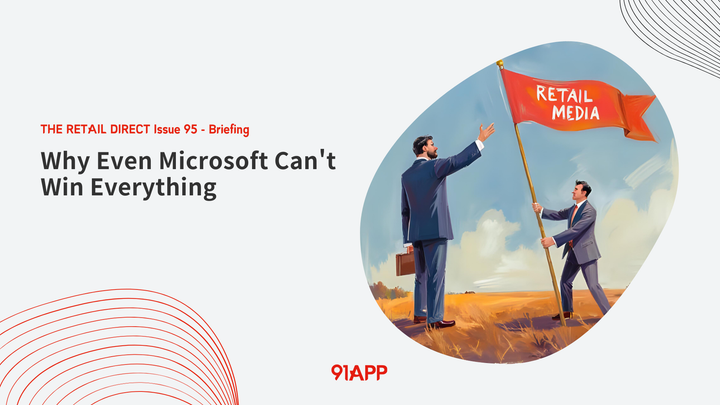
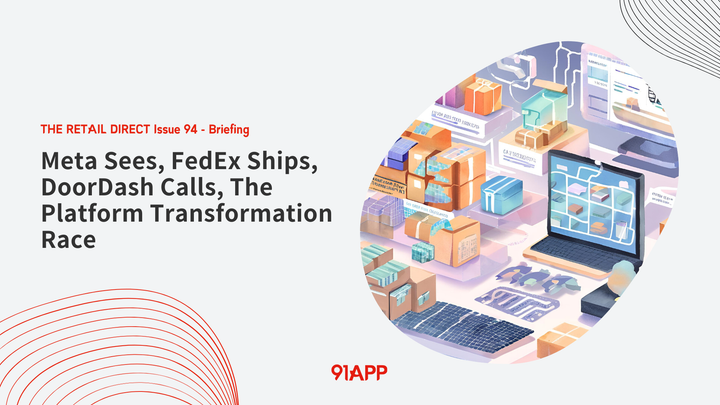

Comments ()